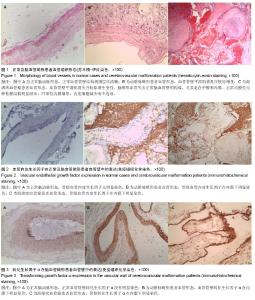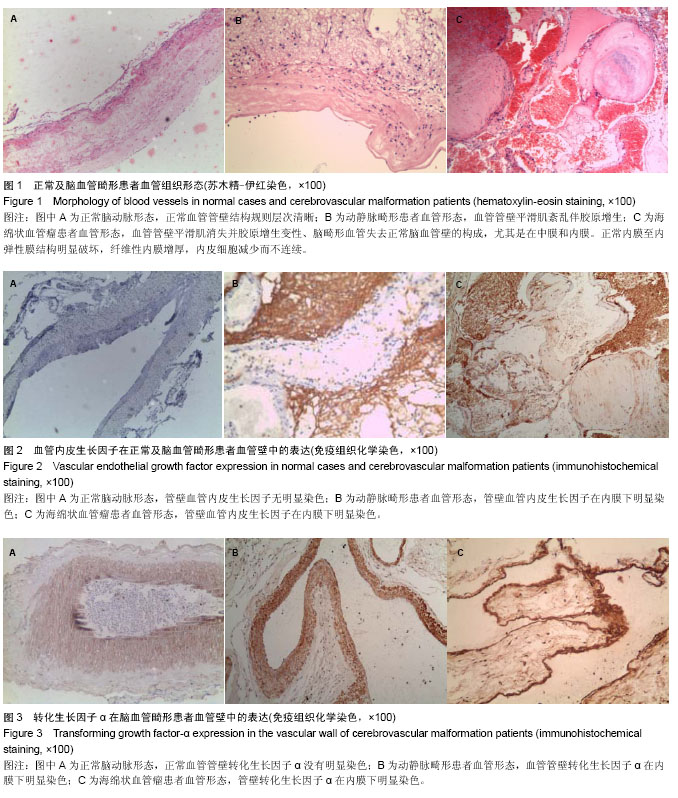| [1] Graf CJ, Perret GE, Torner JC. Blooding from cerebral arteriovenous malformation-s as part of their natural history. J Neurosurg. 1983;58(3):331-333.
[2] Inagawa T, Hirano A. Ruptured intracranial aneurysms: an autopsy study of 133 patients. Surg Neurol. 1990;33(1): 117-123.
[3] Grote E, Hassler W. The critical first minutes after subarachnoid hemorrhage. J Neurosurg. 1988;22(7):654-661.
[4] Hademenos GI, Massoud TF. Rsk of mtracranal arteriovenous malformation rupt-ure due to venous drainage impaiment atheoretical analysis. Stroke. 1996;27(6):1072- 1083.
[5] Niemann D, Aviv R, Cowsill C, et al. Anatomically conformable, three-dimens-ional, detachable platinum microcoil system for the treatment of intracranial aneurysms. AJNR Am J Neuroradiol. 2004;25(9):813-818.
[6] Ding YH, Dai D, Lewis DA, et al. Angiographic and histologic analysis of ex-perimental aneurysms embolized with platinum coils, Matrix, and Hydro Coil. AJNR Am J Neuroradiol. 2005; 26(2):1757-1763.
[7] 宋建蓉,杨志健,张馥敏,等.人血管内皮细胞生长因子-165和人血管生成素-1促进大鼠缺血下肢血管新生[J].中国介入心脏病学杂志,2005,13(2):103-107.
[8] 赵明光,陈游力,宋振全,等.血管生长相关因子在脑动静脉血管畸形发生发展过程中的生物学效应[J].中国临床康复,2003,9(1): 73-75.
[9] 赵明光,王晨,高永中,等.脑动静脉畸形血管生成素表达与血管超微结构的观察[J].中华实验外科杂志,2003,8(20):224-226.
[10] 陈光忠,李铁林,姜晓丹,等.TGF-β1及MMP-2,9在脑动静脉畸形中的表达及意义.[J]中国神经精神疾病杂志,2006,32(1):48-52.
[11] Plasencia AR, Santillan A. Embolization and radiosurgery for arteriovenous malformations. Surg Neurol Int. 2012;3(2): 90-104.
[12] 种春龙,罗其中.脑动静脉出血危险因素的cox回归分析[J].中华神经外科杂志,1998,14(14):222-226.
[13] Chan AC, Drakos SG, Ruiz OE, et al. Mutations in 2 distinct genetic pat-hways result in cerebral cavernous malformationsin mice. Clin Invest. 2012;122(5):1948-1952.
[14] Gresham T. Richter and Adva B. Friedman. Hemangiomas and Vascular Malfor-mations: Current Theory and Management Int J Pediatr. 2012;12(6):129-134.
[15] Nishida T, Faughnan ME, Krings T, et al. Brain arteriovenous malformations associated with hereditary hemorrhagic telangiectasia: gene-phenotype correlations. Am J Med Genet A. 2012;(11):2829-2834.
[16] Cloft HJ, Kallmes DF. Aneurysm packing with hydrocoil embolic system vers-us platinum coils: initial clinical experience. AJNR Am J Neuroradiol. 2004;25(6):60-62.
[17] Warlow C. Management of brain arteriovenous malformations. J Lancet. 2014;383(9929):1632-1633.
[18] Niemann D, Aviv R, Cowsill C, et al. Anatomically conformable, three-dimens-ional, detachable platinum microcoil system for the treatment of intracranial aneurysms. AJNR Am J Neuroradiol. 2004;25(9):813-818.
[19] Ding YH, Dai D, Lewis DA, et al. Angiographic and histologic analysis of ex-perimental aneurysms embolized with platinum coils, Matrix, and Hydro Coil. AJNR Am J Neuroradiol. 2005; 26(2):1757-1763.
[20] James Barkovich, Renzo Guerrini. A developmental and genetic classification for malformations of cortical development: update 2012. Brain. 2012;135(5):1348-1369.
[21] Bavinzski G, Talazoglu V, Killer M. Gross and microscopic histopathological findings in aneurysms of the human brain treated with Guglielmi detachable coils. J Neurosurg. 1999; 91(4):284-293.
[22] Al-Shahi Salman R, Hall JM, Horne MA, et al. Untreated clinical course of cerebral ca-vernous malformations: a prospective, population-based cohort study. Lancet Neurol. 2012;11(3):150-156.
[23] Walker EJ, Su H, Shen F, et al. Bevacizumab attenuates VEGF-induced angiogenesis and vascular malformationsin the adult mouse brain. Stroke. 2012;43(7):1925-1930.
[24] Bharathi D. Jagadeesan, Josser E. Accuracy of susceptibility-weighted imaging for the detection of arteriovenous shunting in vascular malformations of the brain. Stroke. 2011;42(1):87-92.
[25] Downward J, Parker P, Waterfield MD. Autophosphorylation sites on the epidermal growth factor receptor. Nature. 1984; 311(5):483-485.
[26] Kramer A, Yang FC, Snodgrass P, et al. Regulation of daily locomotor activity and sleep by hypothalamic EGF receptor signaling. Science. 2001;294(2):2511-2515.
[27] Longstreth WT Jr, Nelson LM, Koepsell TD, et al. Clinical course of spontaneous subarachnoid hemorrhage: a population-based study in King County, Washington. Neurology. 1993;43(1):712-718.
[28] 陈光忠,李铁林,姜晓丹,等.TGF-β1及MMP-2,9在脑动静脉畸形中的表达及意义[J].中国神经精神疾病杂志,2006,32(1):48-52.
[29] William DH, Daniel R, George D, et al. Attenuation of acute lung injury in transgcnic mice expressing human transforming growth foctor-alpha. Am J Physiol Lung Ccll Mol Physiol. 1999; 277(6):1045-1050.
[30] Choi JH, Pile-Spellman J, Brisman J. Trends in the Management of Intracranial Vascula-r Malformations in the USA from 2000 to 2007. Troke Res Treat. 2012;35(5): 348-369. |

